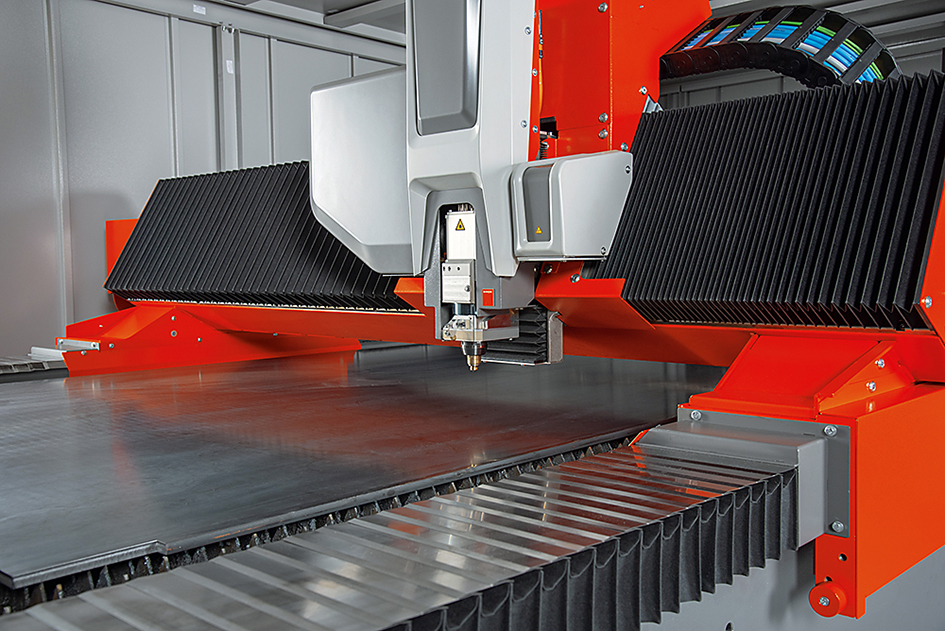Image Source: Google
In the world of manufacturing and industrial production, laser-cutting technology has revolutionized the way materials are cut and shaped. Among the different types of laser cutting machines available, the fiber laser cutting machine stands out as one of the most advanced and efficient options. Fiber lasers utilize a solid-state active gain medium, typically an optical fiber doped with rare-earth elements like erbium, ytterbium, or neodymium.
High Precision Cutting
Key Features:
- Utilizes fiber optics technology for precise cutting
- Capable of cutting complex shapes with sharp corners
- High level of accuracy in cutting various materials
One of the most significant features of the best fiber laser cutting machines is their ability to provide high precision cutting. The use of fiber optics technology allows for a more precise and efficient cutting process compared to traditional laser cutting methods. This technology enables the machine to cut complex shapes with sharp corners and intricate details with utmost accuracy. Whether you are cutting metal sheets, pipes, or tubes, a fiber laser cutting machine ensures a high level of precision in every cut.
Speed and Efficiency
Key Features:
- High cutting speed for increased productivity
- Efficient energy consumption for cost-effective operation
- Automatic nozzle changing system for uninterrupted cutting
Another standout feature of the best fiber laser cutting machines is their impressive speed and efficiency. These machines are capable of cutting materials at high speeds, significantly increasing productivity in manufacturing processes. Additionally, fiber lasers are known for their efficient energy consumption, making them a cost-effective option for industrial operations. With features like automatic nozzle changing systems, these machines ensure uninterrupted cutting processes, further enhancing efficiency in production.
Versatility in Material Cutting
Key Features:
- Ability to cut a wide range of materials, including metals and non-metals
- Consistent cutting quality across different materials
- Adaptable to various thicknesses and types of materials
One of the advantages of using a fiber laser cutting machine is its versatility in cutting different types of materials. Whether you are working with metals like steel, aluminum, or copper, or non-metals like plastics or composites, a fiber laser cutting machine can handle a wide range of materials with consistent cutting quality. These machines are adaptable to various thicknesses and types of materials, making them a versatile solution for diverse manufacturing needs.
User-Friendly Interface
Key Features:
- Intuitive control panel for easy operation
- Touchscreen display for convenient navigation
- Remote monitoring and control capabilities for enhanced operational efficiency
For operators and technicians working with fiber laser cutting machines, having a user-friendly interface is essential for efficient operation. The best fiber laser cutting machines come equipped with intuitive control panels that make it easy to set up and adjust cutting parameters. With touchscreen displays and user-friendly navigation menus, operators can quickly program the machine for different cutting tasks. Additionally, some machines offer remote monitoring and control capabilities, allowing users to oversee operations from a distance and enhance operational efficiency.
Minimal Maintenance Requirements
Key Features:
- Durable components for long-lasting performance
- Low maintenance requirements for cost savings
- Easy access to components for quick maintenance and repairs
When investing in a fiber laser cutting machine, it is important to consider the maintenance requirements to ensure long-term performance and cost-effectiveness. The best fiber laser cutting machines are built with durable components that are designed to withstand the rigors of industrial use, resulting in long-lasting performance. Additionally, these machines have low maintenance requirements, saving both time and money for operators. With easy access to components for quick maintenance and repairs, downtime is minimized, keeping production processes running smoothly.
